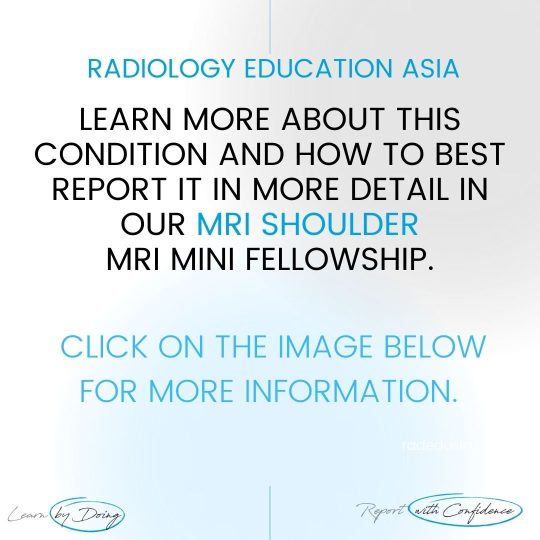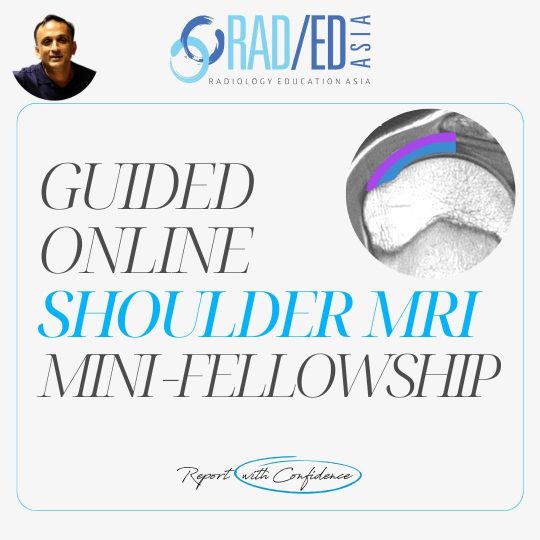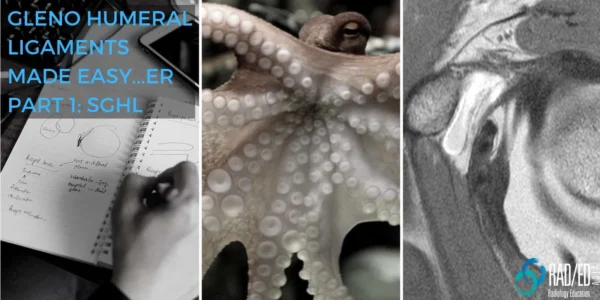

MRI OF SUBSCAPULARIS TEARS, ATROPHY, FATTY INFILTRATION, & BICEPS DISLOCATION
MRI Assessment of the subscapularis tendon is not just about looking for tears. This post looks at the four things that should be assessed.
- The MRI appearance of partial and full-thickness tears.
- Then assessing for muscle atrophy and fatty infiltration to determine prognosis from any tendon repair.
- And looking for secondary biceps subluxation or dislocation and understanding the importance of the subscapularis insertion to biceps tendon stability.

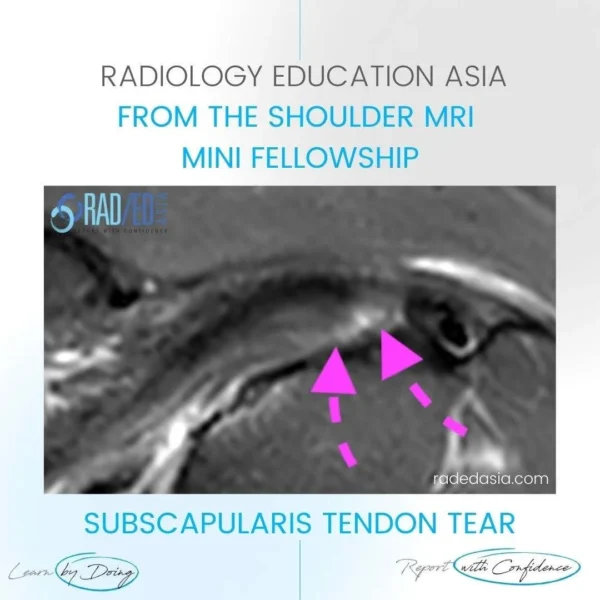
- PDFS axial demonstrates increased fluid type signal at the Subscapularis Tendon insertion in keeping with a deep surface partial tear.
- Deep surface is where the tears commonly begin.
- Look for discontinuity of tendon fibres and increased fluid type signal intensity on T2 or PD Fat Sat (T2FS/ PDFS) images.


- T2FS sagittal demonstrates increased fluid type signal at the Subscapularis Tendon insertion in keeping with a deep surface tear.
- I find the sagittal scans much better to spot tears before I look at the axial scans.
- Look for discontinuity of tendon fibres and increased fluid type signal intensity on T2 or PD Fat Sat (T2FS/ PDFS) images.

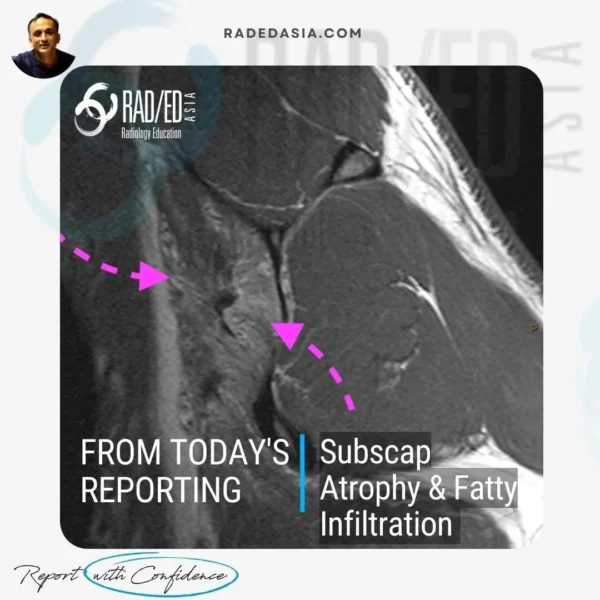
Muscle atrophy and fatty infiltration are two important findings to look for in any rotator cuff tendon tear.
- MUSCLE ATROPHY,
- Look for reduction in size of the muscle and reduction in muscle fibres.
- For subscapularis this is best assessed on Sagittal T1 pr PD scans.
- Do not assess on axial or Fat saturated images as its harder.
- Extent of muscle atrophy important to report as it affects prognosis of tendon repairs.
- FATTY INFILTRATION,
- Occurs after atrophy commences
- Fat cells infiltrate the muscle belly.
- Look for increased T1 or PD signal in the muscle.
- For subscapularis this is best assessed on Sagittal scans.
- Do not assess on axial or Fat saturated images. Fat saturation will remove the fat signal and you cant assess the amount of fatty infiltration.
- Extent of fatty infiltration important to report as it affects prognosis of tendon repairs.

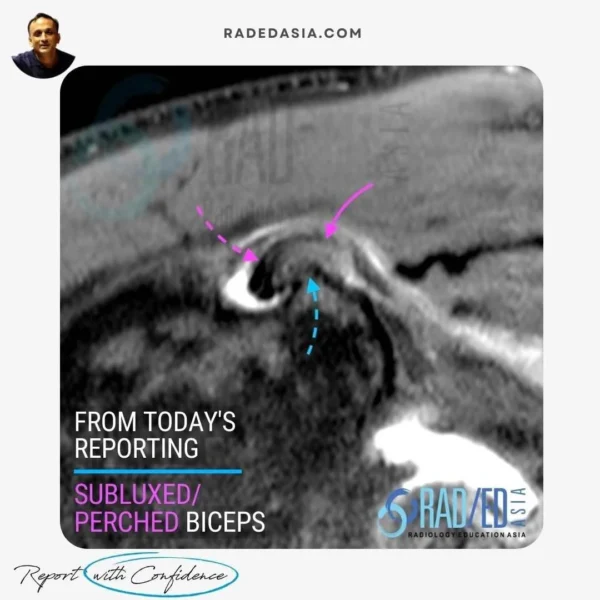
- Axial scan. Biceps tendon (Both pink arrows) medially subluxed and perched on top of the medial margin of the bicipital groove (Green arrow).
- This was a result of a subscapularis tear (not shown). See the next tab that explains how a subscapularis tear and biceps subluxation/dislocation are connected.
- Increased intermediate signal in the biceps tendon from tendonosis.

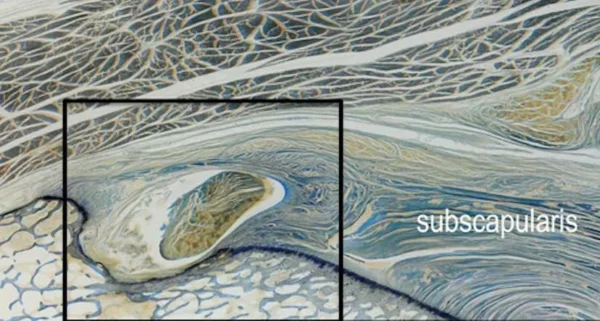
- Wonderful histological image of the relationship of subscapularis attachment to the biceps tendon in the bicipital groove where subscapularis forms a medial wall and prevents medial movement of biceps.
- This explains why a tear of subscap can result in medial subluxation/dislocation of the biceps tendon.
Image from: Tamborrini G et al. The Rotator Interval Ultrasound Int Open 2017; 3: E107–E116.

Learn more about this condition & How best to report it in more detail in our Online Guided SHOULDER MRI Mini Fellowship.
More by clicking on the images below.
For all our other current MSK MRI & Spine MRI
Online Guided Mini Fellowships.
Click on the image below for more information.
- Join our WhatsApp RadEdAsia community for regular educational posts at this link: https://bit.ly/radedasiacommunity
- Get our weekly email with all our educational posts: https://bit.ly/whathappendthisweek







